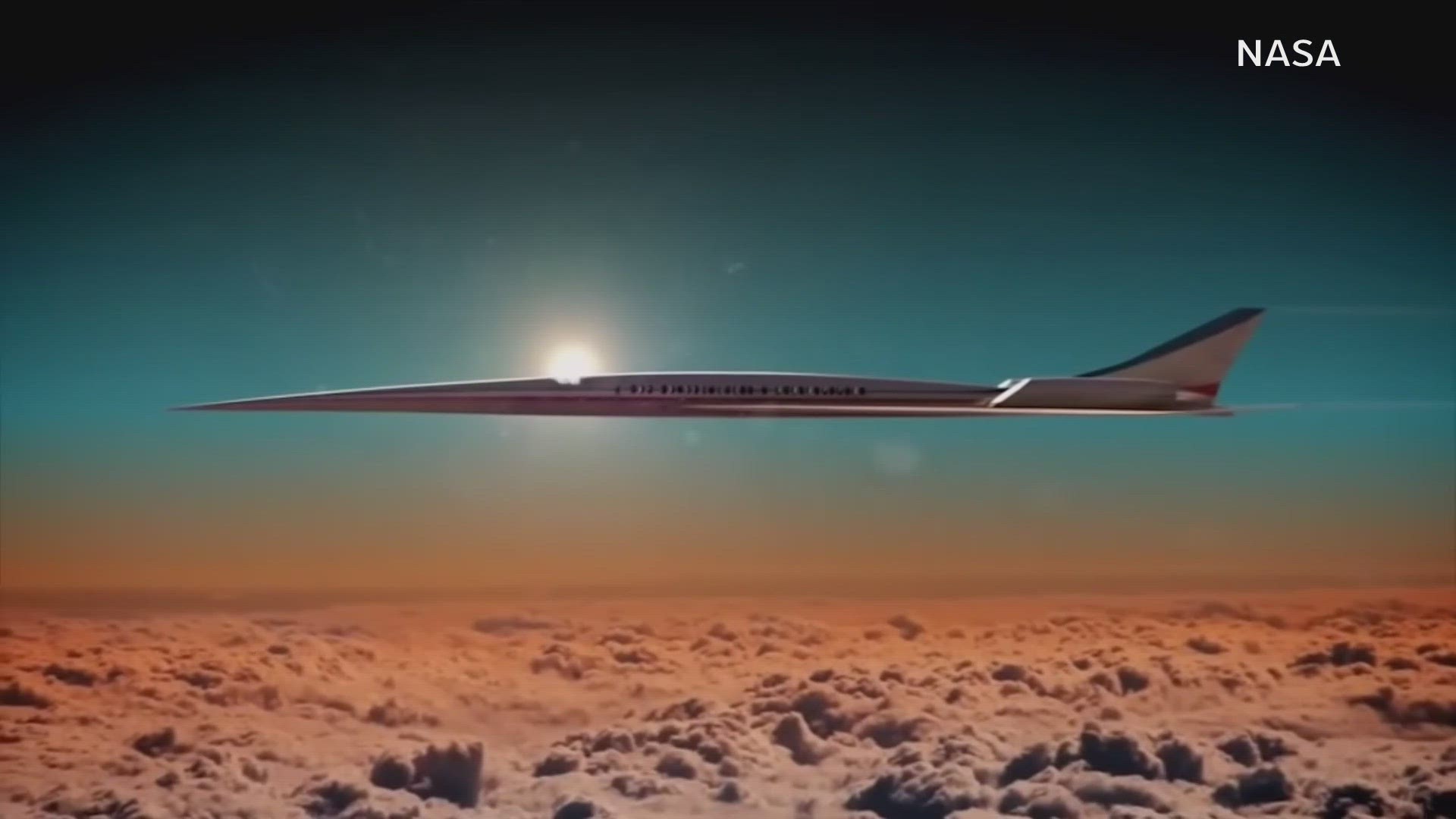SAN DIEGO — In the not-too-distant future, the five-hour flight from San Diego to New York could be cut in half.
The X-59, a quiet supersonic technology x-plane (Quesst), is the heart of the mission to revolutionize commercial flight. The one-of-a-kind aircraft is designed to break the sound barrier while making a "quieter" boom than current aircraft.
Air Vehicle Engineering Lead Mike Buonanno said he can remember doing napkin sketches for this project, figuring out what a low sonic boom airplane would look like. “It’s amazingly cool," he said.
Sonic booms
Sonic booms are rare over land in the United States and essentially illegal.
A sonic boom rattled Washington D.C. in 2023 and was caused by a fighter jet scrambling to intercept a private aircraft over restricted airspace.
The X-59 should be much quieter, more like a car door closing across the street than a boom that could rattle your home.
Reducing the boom is key to new federal regulations allowing commercial supersonic flight over the continental U.S.
That means a five-hour cross-country flight would be cut down to about two and a half hours.
NASA
NASA is already using an extreme dive maneuver to create quieter booms and measure the impact on the ground. The X-59 is the next phase of the project.
The X-59 is being built in Palmdale in the High Desert in Los Angeles County at Lockheed Martin Skunk Works, a name synonymous with taking aviation to new heights.
Soon, it will fly all over the country, possibly even San Diego, to collect data.
Mike Buonanno said it looks very different from other aircraft, and there’s a reason for that.
“Really, when you look at the airplane, and you wonder why does it look that way? Whatever it is, you're wondering about the reason why… it's that way for low sonic boom,” Buonanno said.
The futuristic design includes a cockpit with no front window for a pilot to look out from.
Brian Griffin, NASA’s Flight Test Lead on the project says they came up with a novel solution.
“It's very unique. And that's a NASA-developed system. We call it XVS or external vision system. And it's a monitor that they're looking at within the cockpit that's being fed by a 4k high definition camera. So essentially, they'll probably forget that they're not even looking outside at a real window," Griffin said.
Groundbreaking technology
To design and construct this aircraft, they needed groundbreaking design technology including computers that could create a virtual reality environment to figure out how they could assemble the plane.
Senior Manager of Production Operations Greg Shoup says a drilling robot helped speed production up.
“We actually had a moveable robot that came in that moved around the airplane, and was able to drill all of those holes," he said.
Shoup said the robot saved them months of time and was incredibly accurate and consistent.
Building a prototype has many challenges, including the need to order or manufacture replacement parts, many of which are one-of-a-kind, and it’s not an inexpensive project, with a price tag of over $63 billion.
It’s not all-new, though. The X-59 borrowed from existing aircraft, including an existing engine that they modified to fly faster for longer periods of time, a cockpit from a T-38 and landing gear off of an F-16.
The project began in earnest in 2015 with the first construction in 2019 and finally, in 2024, it will take flight and the people working on it can’t wait to see it in the sky and hear that quieter sonic boom.
What remains to be seen is whether it will lead to a future of commercial supersonic aviation.
WATCH RELATED: Airplane noise pollution prompts Carlsbad City Council to take action

